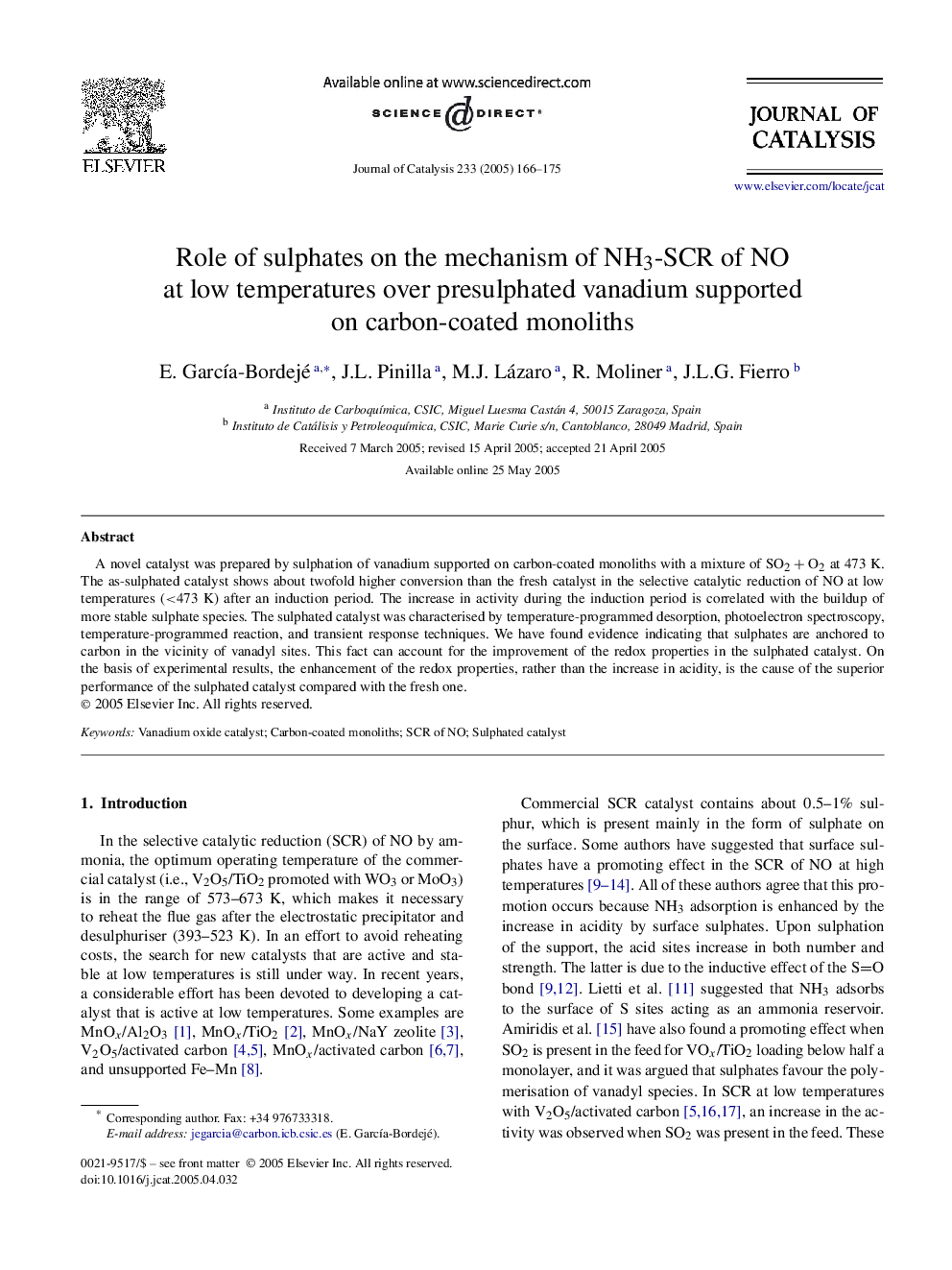| Article ID | Journal | Published Year | Pages | File Type |
|---|---|---|---|---|
| 10244784 | Journal of Catalysis | 2005 | 10 Pages |
Abstract
A novel catalyst was prepared by sulphation of vanadium supported on carbon-coated monoliths with a mixture of SO2Â +Â O2 at 473 K. The as-sulphated catalyst shows about twofold higher conversion than the fresh catalyst in the selective catalytic reduction of NO at low temperatures (<473K) after an induction period. The increase in activity during the induction period is correlated with the buildup of more stable sulphate species. The sulphated catalyst was characterised by temperature-programmed desorption, photoelectron spectroscopy, temperature-programmed reaction, and transient response techniques. We have found evidence indicating that sulphates are anchored to carbon in the vicinity of vanadyl sites. This fact can account for the improvement of the redox properties in the sulphated catalyst. On the basis of experimental results, the enhancement of the redox properties, rather than the increase in acidity, is the cause of the superior performance of the sulphated catalyst compared with the fresh one.
Related Topics
Physical Sciences and Engineering
Chemical Engineering
Catalysis
Authors
E. GarcÃa-Bordejé, J.L. Pinilla, M.J. Lázaro, R. Moliner, J.L.G. Fierro,
